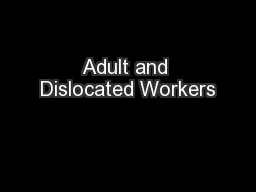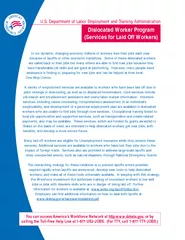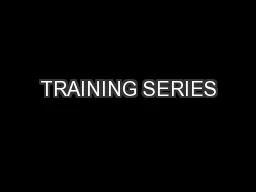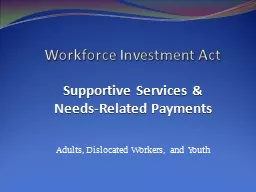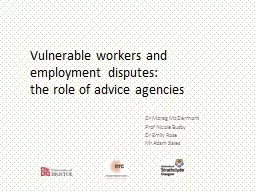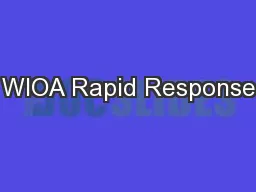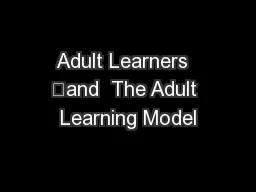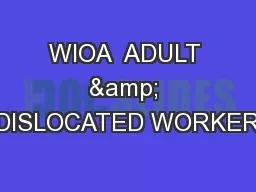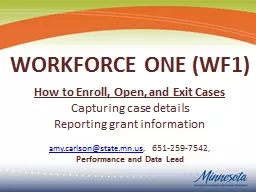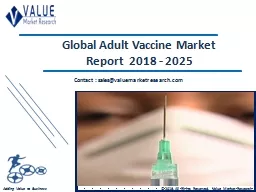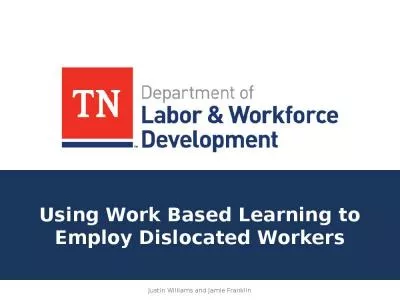PPT-Adult and Dislocated Workers
Author : celsa-spraggs | Published Date : 2018-10-02
Workforce Innovation and Opportunity act program and training service eligibility OUTLINE This session will cover the following WIOA Adult eligibility Mandatory
Presentation Embed Code
Download Presentation
Download Presentation The PPT/PDF document "Adult and Dislocated Workers" is the property of its rightful owner. Permission is granted to download and print the materials on this website for personal, non-commercial use only, and to display it on your personal computer provided you do not modify the materials and that you retain all copyright notices contained in the materials. By downloading content from our website, you accept the terms of this agreement.
Adult and Dislocated Workers: Transcript
Download Rules Of Document
"Adult and Dislocated Workers"The content belongs to its owner. You may download and print it for personal use, without modification, and keep all copyright notices. By downloading, you agree to these terms.
Related Documents

